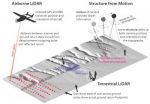(Press-News.org) A new study calls into question the evolutionary stability of an ecological explanation of biodiversity.
The study, published in the journal PLOS ONE, brings together evolutionary theory and ecology to explore one of the big questions in ecology: How is biodiversity developed and maintained?
"This is a fundamental question if we want to protect biodiversity—what exactly do we need to protect?" says IIASA Evolution and Ecology Program Director Ulf Dieckmann, who led the study together with Florian Hartig from the University of Freiburg, collaborating with colleagues from the Helmholtz Centre for Environmental Research in Leipzig and the French National Center for Scientific Research in Grenoble.
In Biology 101, students learn that two species cannot occupy the same niche, and that the world's biodiversity is thus closely related to the number of niches that exist. But in fact, in the real world this is often not true—it appears that organisms can and do occupy the same niche, meaning that they feed on the same resource, in the same place, at the same time.
"For example," says Dieckmann, "herring and sprat in the Baltic Sea occupy very similar ecological niches, feeding on the same kinds of plankton. How such species can robustly co-exist is a key question for modern ecology."
One theory, known as Relative Nonlinearity of Competition (RNC), suggests that such species can co-exist because they react differently to fluctuations in resources or other limiting factors—such as algal blooms for fish, or rainfall variations for mosquitoes—causing changes in the environment that temporarily benefit the other species. This leads to a dynamic relationship in which each species temporarily benefits from the other's influence on the environment, holding the two in balance.
"The idea has held up well in theory, but it's difficult to test in practice," says Dieckmann. So he and his colleagues decided to test RNC from another perspective, using three standard evolutionary models. "We wanted to find out what happens to the RNC mechanism when we allow the species to adapt."
Their results show that RNC is typically not stable if one considers evolution: in all three models, the species differences that supported their coexistence disappear through adaptation. This means that, evolutionarily, the two coexisting species are outcompeted and replaced by a single species. Dieckmann says, "We thus suggest that the potential of this mechanism for explaining the origin and maintenance of biodiversity might have been overestimated in the literature."
The scientists conclude that further research will be needed to understand what other mechanisms support biodiversity.
Dieckmann says that the study points to the importance of interdisciplinary research, such as that conducted at IIASA. "Because evolution and ecology research are most often done in isolation, nobody had yet thought to ask whether this mechanism was evolutionarily stable."
INFORMATION:Reference:
Hartig F, Münkemüller T, Johst K, Dieckmann U. 2014. On the sympatric evolution and evolutionary stability of coexistence by relative nonlinearity of competition. PLOS ONE. doi:10.1371/journal.pone.0094454
For more information contact:
Ulf Dieckmann
Program Director
Evolution and Ecology
+43(0) 2236 807 386
dieckmann@iiasa.ac.at
Katherine Leitzell
IIASA Press Office
Tel: +43 2236 807 316
Mob: +43 676 83 807 316
leitzell@iiasa.ac.at
About IIASA:
IIASA is an international scientific institute that conducts research into the critical issues of global environmental, economic, technological, and social change that we face in the twenty-first century. Our findings provide valuable options to policy makers to shape the future of our changing world. IIASA is independent and funded by scientific institutions in Africa, the Americas, Asia, Oceania, and Europe. http://www.iiasa.ac.at
Biodiversity in the balance
2014-09-03
ELSE PRESS RELEASES FROM THIS DATE:
Penn study demonstrates wearable sensors to detect firearm use
2014-09-03
A new study from the University of Pennsylvania demonstrates that wearable sensors could one day transform the correctional system by tracking gun use by community-based offenders, who account for a disproportionate share of fatal and non-fatal shootings.
Currently, detecting and deterring this type of crime can be challenging in the absence of reliable evidence that a particular community-supervised offender illegally used a firearm.
In the study, published this week in the journal PLOS ONE, Charles Loeffler, an assistant professor of criminology at Penn, demonstrates ...
Widely used depression drug associated with dental implant failure
2014-09-03
Alexandria, Va., USA – The International and American Associations for Dental Research (IADR/AADR) have published a paper titled "SSRIs and the Risk of Osseointegrated Implant Failure – A Cohort Study." Selective Serotonin Reuptake Inhibitors (SSRIs), the most widely used drugs for the treatment of depression, have been reported to reduce bone formation and increase the risk of bone fracture. Since osseointegration is influenced by bone metabolism, this study investigates the association between SSRIs and the risk of failures in osseointegrated implants. The manuscript, ...
Story from the Department of Energy's Oak Ridge National Laboratory, Sept. 2014
2014-09-03
To arrange for an interview with a researcher, please contact the Communications staff member identified at the end of each tip. For more information on ORNL and its research and development activities, please refer to one of our media contacts. If you have a general media-related question or comment, you can send it to news@ornl.gov.
OPTICS – Precision projectile tracker …
Rifle optical sighting systems with a 19th century heritage could blast into modern times with a laser-based bullet tracking system being developed by a team led by Slobodan Rajic of Oak Ridge National ...
Trouble starting a task? Perception of time may be the problem, study finds
2014-09-03
Completing tasks and crossing them off the ubiquitous "to-do" list is a great feeling. But what about those nagging tasks we keep putting off? What's the difference between those jobs that get completed and those that do not?
The answer may be our perception of time, according to new research by Yanping Tu, a doctoral candidate at the University of Chicago's Booth School of Business.
The study, "The Categorization of Time and Its Impact on Task Initiation," recently published in the Journal of Consumer Research, finds that people are more likely to begin a job when, ...
How much gravity is enough?
2014-09-03
TORONTO, September 3, 2014 – Keeping upright in a low-gravity environment is not easy, and NASA documents abound with examples of astronauts falling on the lunar surface. Now, a new study by an international team of researchers led by York University professors Laurence Harris and Michael Jenkin, published today in PLOS ONE, suggests that the reason for all these moon mishaps might be because its gravity isn't sufficient to provide astronauts with unambiguous information on which way is "up".
"The perception of the relative orientation of oneself and the world is important ...
Team develops new, inexpensive method for understanding earthquake topography
2014-09-03
Boulder, Colo., USA – Using high-resolution topography models not available in the past, geologists can greatly enrich their research. However, current methods of acquisition are costly and require trained personnel with high-tech, cumbersome equipment. In light of this, Kendra Johnson and colleagues have developed a new system that takes advantage of affordable, user-friendly equipment and software to produce topography data over small, sparsely vegetated sites at comparable (or better) resolution and accuracy to standard methods.
Their workflow is based on structure ...
Study sets guideline for determining effectiveness of college football training methods
2014-09-03
VIDEO:
Athletic performance varies from day to day, which can make it difficult for strength and conditioning professionals to judge whether athletes' improvements are due to effective training. Now, University of...
Click here for more information.
COLUMBIA, Mo. –Athletic performance varies from day to day, which can make it difficult for strength and conditioning professionals to judge whether athletes' improvements are due to effective training. Now, University of Missouri ...
NIH-led scientists discover HIV antibody that binds to novel target on virus
2014-09-03
WHAT:
An NIH-led team of scientists has discovered a new vulnerability in the armor of HIV that a vaccine, other preventive regimen or treatment could exploit. The site straddles two proteins, gp41 and gp120, that jut out of the virus and augments other known places where broadly neutralizing antibodies (bNAbs) bind to HIV. This newly identified site on the viral spike is where a new antibody found by the scientists in an HIV-infected person binds to the virus. Called 35O22, the antibody prevents 62 percent of known HIV strains from infecting cells in the laboratory and ...
Hawaii scientist maps, names Laniakea, our home supercluster of galaxies
2014-09-03
University of Hawaii at Manoa astronomer R. Brent Tully, who recently shared the 2014 Gruber Cosmology Prize and the 2014 Victor Ambartsumian International Prize, has led an international team of astronomers in defining the contours of the immense supercluster of galaxies containing our own Milky Way. They have named the supercluster "Laniakea," meaning "immense heaven" in Hawaiian. The paper explaining this work is the cover story of the September 4 issue of the prestigious journal Nature.
Galaxies are not distributed randomly throughout the universe. Instead, they are ...
Sequencing of 5 African fishes reveals diverse molecular mechanisms underlying evolution
2014-09-03
Cambridge, MA. Wed. September 3, 2014 — In an effort to understand the molecular basis of adaptation in vertebrates, researchers sequenced the genomes and transcriptomes of five species of African cichlid fishes. A research team led by scientists at the Broad Institute of MIT and Harvard uncovered a variety of features in the cichlid genomes that enabled the fishes to thrive in new habitats and ecological niches within the Great Lakes of East Africa. In addition to helping explain the complex genomic mechanisms that give rise to incredible diversity among cichlid fishes, ...


